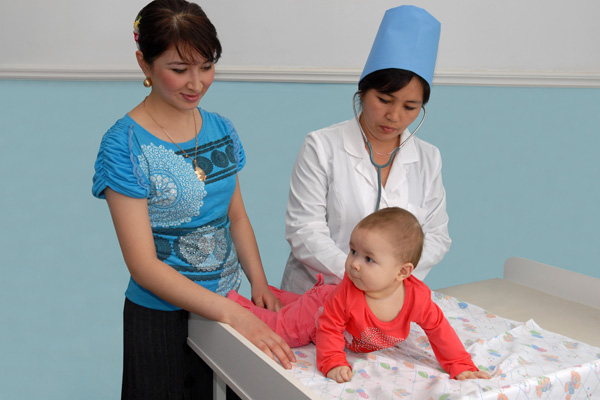
Tashkent, Uzbekistan (UzDaily.com) -- As of 1 January 2019, the number of resident population of the Republic of Uzbekistan made up 33,254,100 people and increased by 597,400 people, or 1.8% in 2018, the State Statistics Committee of Uzbekistan said.
In particular, the urban population made up 16.8 million people (50.5% of the total population), the rural population – 16.45 million people (49.5%).
Analysis of population density showed that in the Republic of Uzbekistan per 1 square kilometer there are 74.1 people, the highest population density in Andijan (713.2 people per square kilometer), Ferghana (544.8 people) and Namangan (370.0 people), the smallest - in Navoi region (8.8 people) and the Republic of Karakalpakstan (11.2 people).
According to preliminary data, as of 1 January 2019, 30.3% of the total resident population in the republic are under the working age, 59.5% are of the working age and 10.2% are over the working age.
The total coefficient of demographic load in 2018 was 681 people (per 1000 working-age population); the younger population of the working age was 509 people, the working population’s age was 172 people.
In January-December 2018, 768,300 births were registered (here and hereafter, births meant live births), respectively, the birth rate per 1000 population was 23.3 per thousand and, compared to the same period of 2017, increased 1.2 ppm (January-December 2017 - 22.1 ppm).
The average age of the mother at birth of the first child is 23.7 years. In the regions, the highest age is observed in Syrdarya region and the city of Tashkent (24.3 years), the smallest – in Samarkand region (23.1 years).
In the order of birth by mothers, 36.3% was the first child, 34.0% was the second child and 29.7% was the third and more in the mother’s child.
In January-December 2018, 154,700 deaths were recorded, respectively, the mortality rate was 4.7 ppm and, compared to the same period of 2017, decreased by 0.3 ppm (in January-December 2017 - 5.0 ppm).
Of the total number of registered deaths in January-December 2018, 60.3% died from circulatory system diseases, 9.7% from neoplasms, 6.5% from accidents, poisonings and injuries, 5.6% from diseases of the organs digestion, 4.0% from respiratory diseases, 1.5% from infectious and parasitic diseases, and 12.4% from other diseases.
The number of registered dead children under the age of 1 year was 7,500, of which 60.5% died from conditions arising in the perinatal period, 16.8% from respiratory diseases, 11.7% from congenital anomalies, 2.5% from infectious and parasitic diseases, 2.3% from accidents, poisonings and injuries, 0.7% from diseases of the digestive organs, 5.5% from other diseases.
In January-December 2018, the natural population growth amounted to 613,600 people and, compared to the same period of 2017, increased by 58,800 people (in January-December 2017 – 554,800 people).
During the period from January to December 2018, the civil registry offices registered 311,400 marriages. In the republic, the marriage rate per 1000 population was 9.4 per thousand.
The growth of registered marriages, compared to the same period of 2017, was observed in Syrdarya (by 12.2%), Jizzakh (6.9%), Tashkent (5.9%), Andijan (7.2%) regions and Tashkent city (5.7%).
During the period from January to December 2018, the civil registry offices registered 32,300 divorces. In the republic, the divorce rate per 1000 population was 1.0 per mille.
The growth of registered divorces, compared to the same period of 2017, was observed in Andijan region (by 31.3%), Tashkent city (by 19.4%), as well as in Surkhandarya (by 5.6%) and Tashkent (by 2.8%) regions.
Compared to the same period of 2017, a decrease was recorded in Khorezm (by 23.1%) and Kashkadarya (by 20.0%) regions.
In January-December 2018, the number of arrivals was 160,000 people (internal - 157.2 thousand people, external - 2.8 thousand people), and the number of retired people - 176.2 thousand people (internal - 157, 2 thousand people, external - 19.0 thousand people). The migration balance reached minus 16.2 thousand people and, compared to the same period of 2017, increased by 2.4 thousand people.
The high level of migration balance falls on Tashkent city (minus 5.6 thousand people), Kashkadarya region, and the Republic of Karakalpakstan (minus 4.2 thousand people), as well as on Samarkand region (minus 3.7 thousand people). The positive balance of migration was noted in Tashkent (plus 15.3).